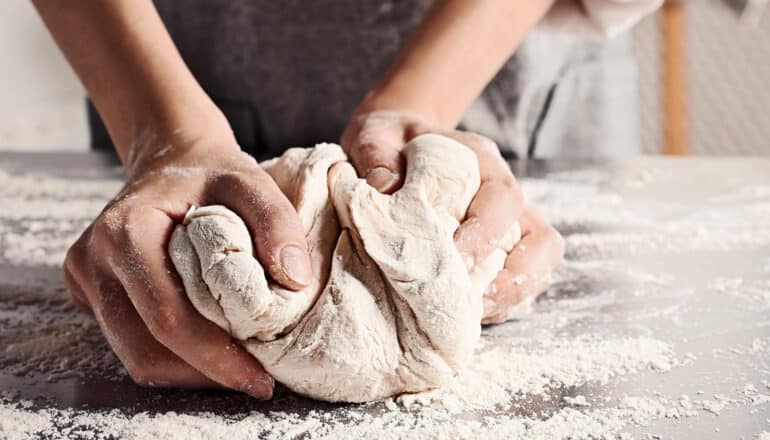How baker’s yeast sheds light on human migration
- Baker’s yeast has been found to have genetic links to human migration, suggesting that humans domesticated it around 7000 BCE.
- Researchers analyzed DNA from wild and domesticated yeast in different regions of Europe and America, finding distinct subpopulations within continents.
- The study suggests that the forest populations of yeast are not completely separated from human activity, but rather have been influenced by humans over time.
- A specific example of this influence is the introduction of North American vines to European winemaking regions in the 1850s, which led to the transfer of yeast between the two regions.
- The study highlights the potential for humans to be changing their environment without realizing it, and raises concerns about the impact of human activity on microbial populations and ecosystems.

Yeast is already a familiar ingredient to bakers and winemakers, but new research suggests it can also trace the footsteps of our ancestors.
Humans domesticated baker’s yeast as early as 7000 BCE to make bread, beer, wine, and sake. However, wild varieties of the same yeast species also live on trees. These domesticated and wild yeast look different genetically, but researchers wanted to explore possible links between the two.
“Other studies had just started to show that baker’s yeast in forests are different, and some of my own work in Europe had shown that the forest populations were different than the domesticated populations,” says Douda Bensasson, corresponding author of the study and an associate professor in the plant biology department at University of Georgia.
“But we wanted to go deeper and characterize the different groups in America and Europe.”
The new study used publicly available data from all over the world and samples from tree bark in different regions, primarily the southeastern US (Some samples were collected on UGA’s North Campus near the Arch.)
The researchers extracted and analyzed DNA from the yeast they found. They then used this data to compare their genetic makeup across different regions.
“We are seeing distinct subpopulations within continents,” says Jacqueline Peña, lead author of the study and a PhD candidate in the plant biology department. “And we’re seeing that, even though we had originally thought that these wild populations would be different, it seems as though they’re not completely separated from human activity.”
It still isn’t fully known how microbes like yeast live in their natural habitats. As such, the researchers warn that humans could be causing drastic changes to the environment without realizing it.
To collect yeast samples, the researchers broke off pieces of tree bark and placed them into sealed tubes. Using a process similar to making wine to get the yeast to grow, the researchers analyzed its DNA to determine when different groups split off from each other.
“We were expecting that these would be ancient divergences and that the forest yeast would’ve had nothing to do with humans this whole time,” says Bensasson.
“But to our surprise, we found that it roughly coincided with the last ice age, which is around the time that humans were starting to grow their own food and spreading farming around the world.”
Peña described this dynamic as a “unique duality” where there is both a wild and domestic variety of yeast, but both were influenced in some way by humans.
While examining the yeast from different regions, Peña and Bensasson found something strange—yeast in the winemaking regions of southern Europe resembled those found in the southern US. And their data suggested the yeast was brought over from the US in the last few hundred years.
The researchers believe this may be due to the Great French Wine Blight. In the 1850s, humans accidentally introduced an insect pest to Europe, devastating vineyards in the region.
To save the wine industry, workers brought vines resistant to the bug over from North America. Since they couldn’t make wine from the grapes due to the fruit’s low quality, they instead grafted European vines onto North American rootstock. In doing so, yeast living in the North American vines were passed on to their European counterparts.
Studying yeast in this way offers a unique look at how humans have moved through and interacted with their environment. However, Bensasson voiced concerns over how we may be changing the world around us.
“If humans, without intending to, were moving microbes around thousands of years ago, just think about all the stuff that we are doing now,” says Bensasson.
“We may be changing all kinds of things without knowing it. And I don’t know if that’s good or bad, but it’s a little worrying that we have no idea what we’re doing.”
The study appears in Molecular Ecology.
Source: University of Georgia
The post How baker’s yeast sheds light on human migration appeared first on Futurity.
